Why you can trust Tom's Hardware
All benchmarks were performed at CPU defaults, and with XMP memory mode enabled. Asus calls its XMP for AMD “D.O.C.P.”
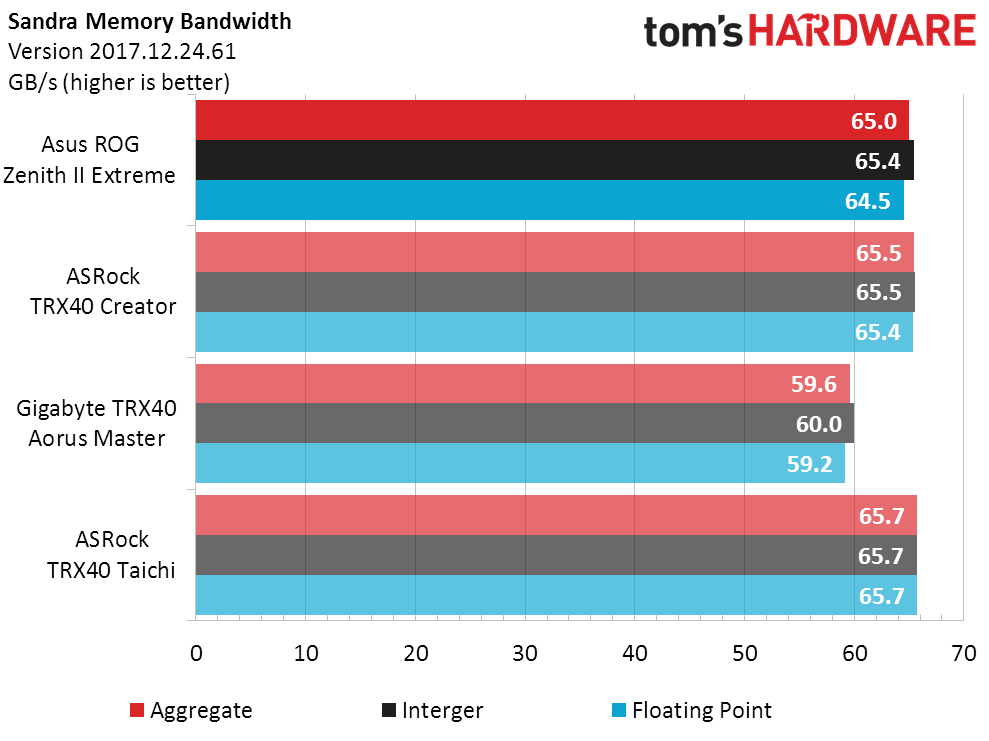

Asus and ASRock are par in stock memory bandwidth, with both producing greater performance at DDR4-3600 than either produced in our memory overclocking test. Gigabyte starts out from behind, but our previous overclocking page shows that it has far more growth potential.
3DMark and PCMark
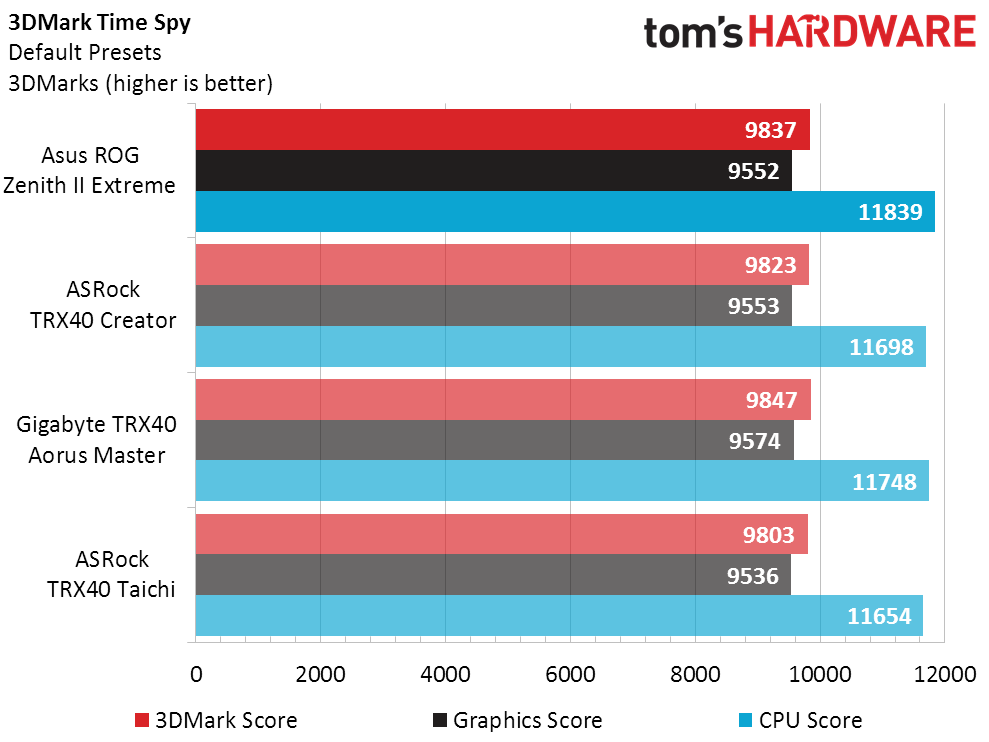
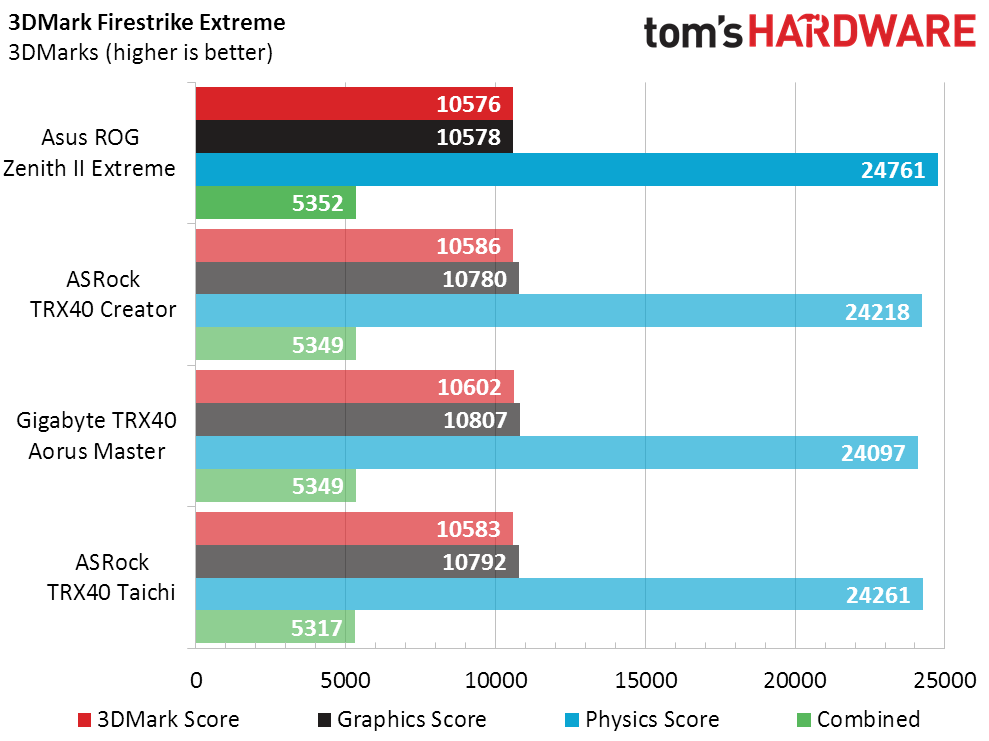

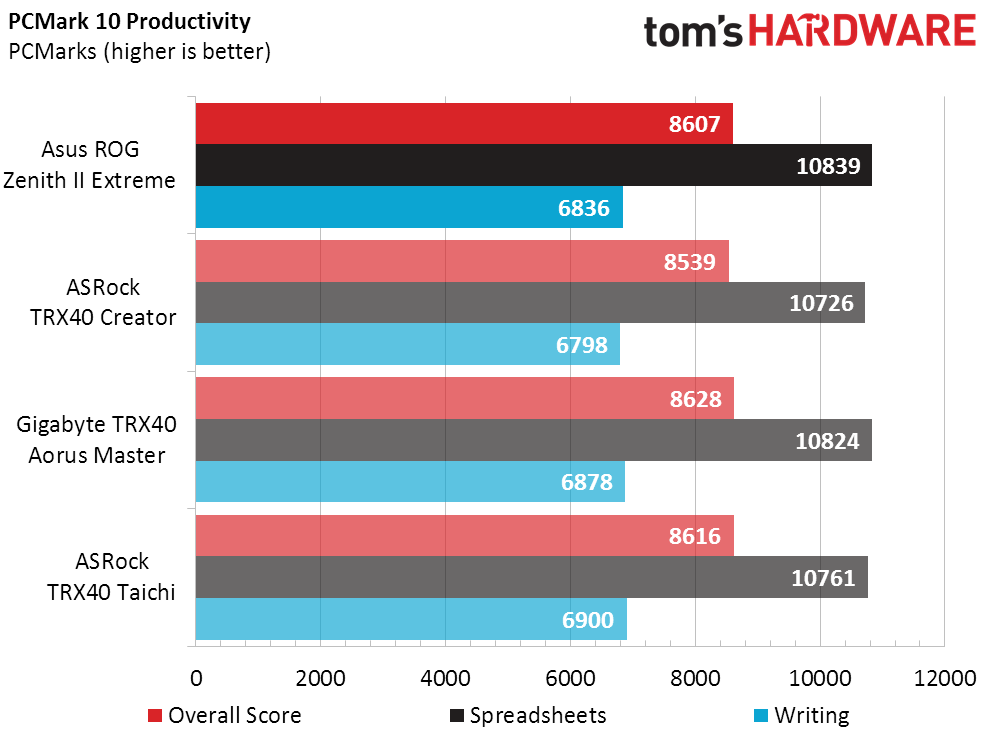
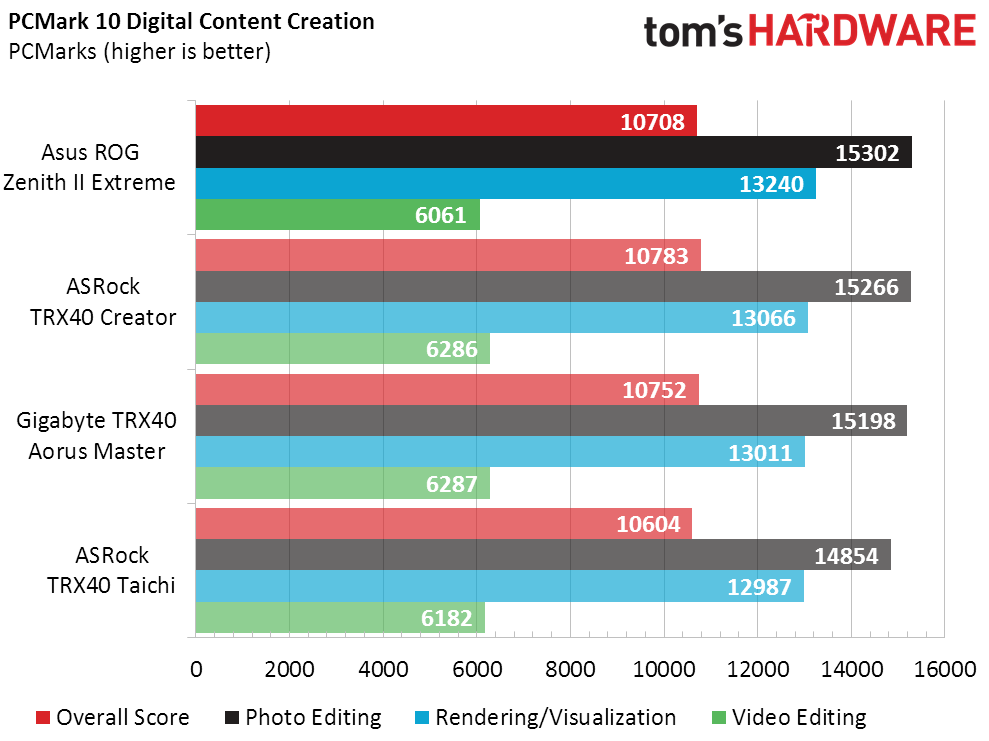

The ROG Zenith II Extreme lags behind slightly in application startup and only reaches the middle of the pack in productivity, content creation, and office.
3D Games
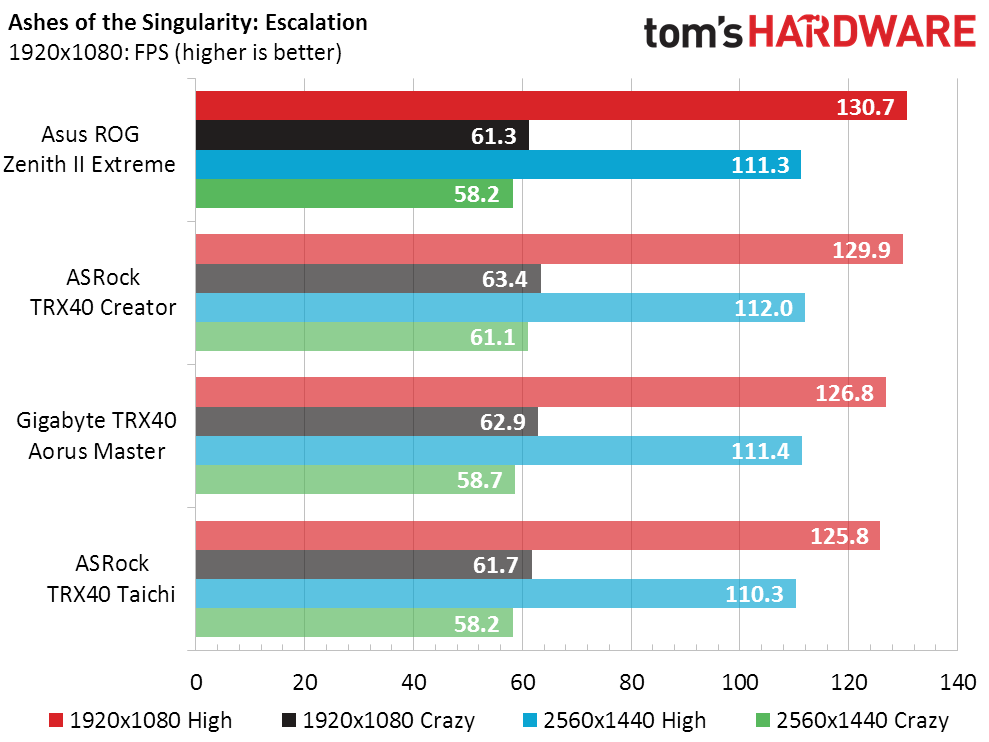
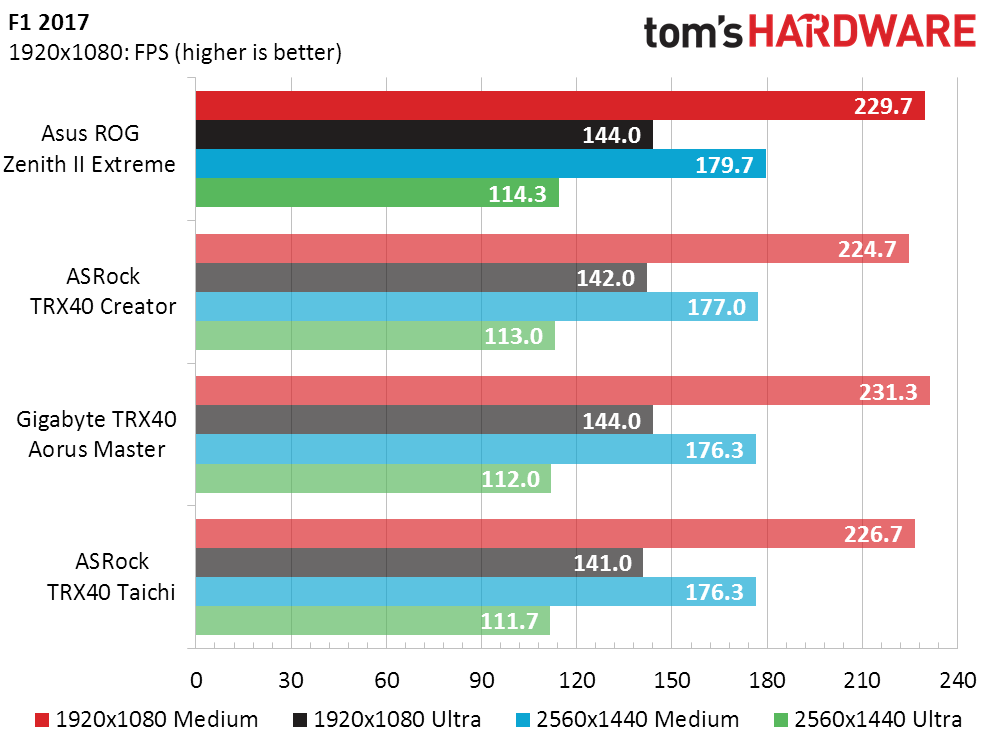
The ROG Zenith II Extreme wins at our lowest Ashes and highest F1 2017 settings, developing a marginal overall lead across the average of all settings.
Mixed Workloads
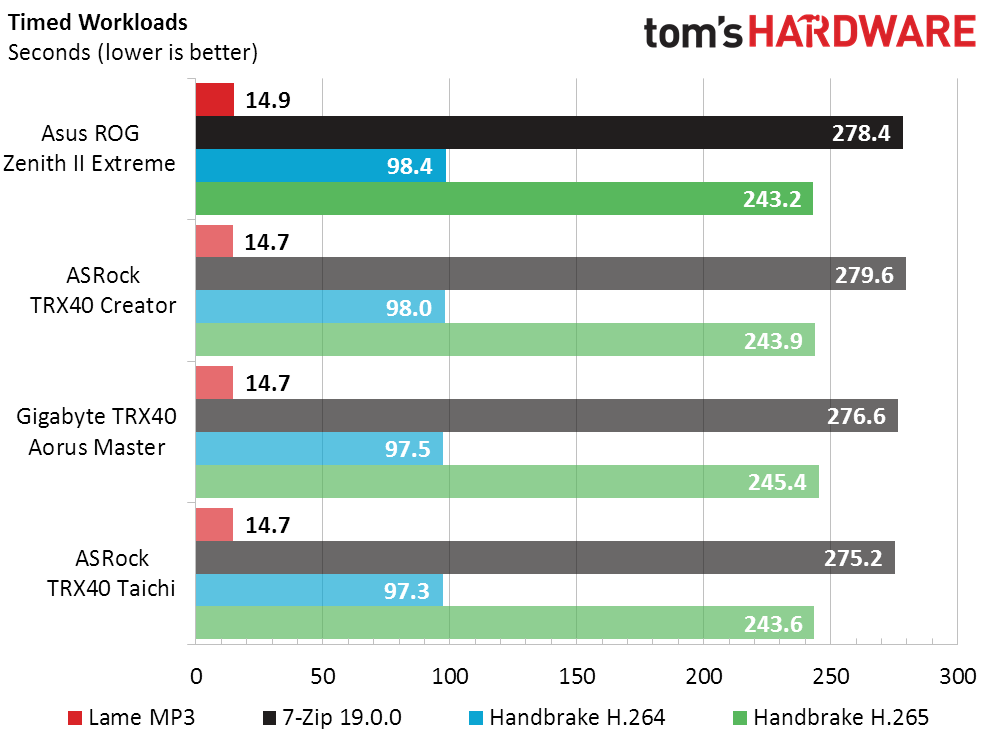
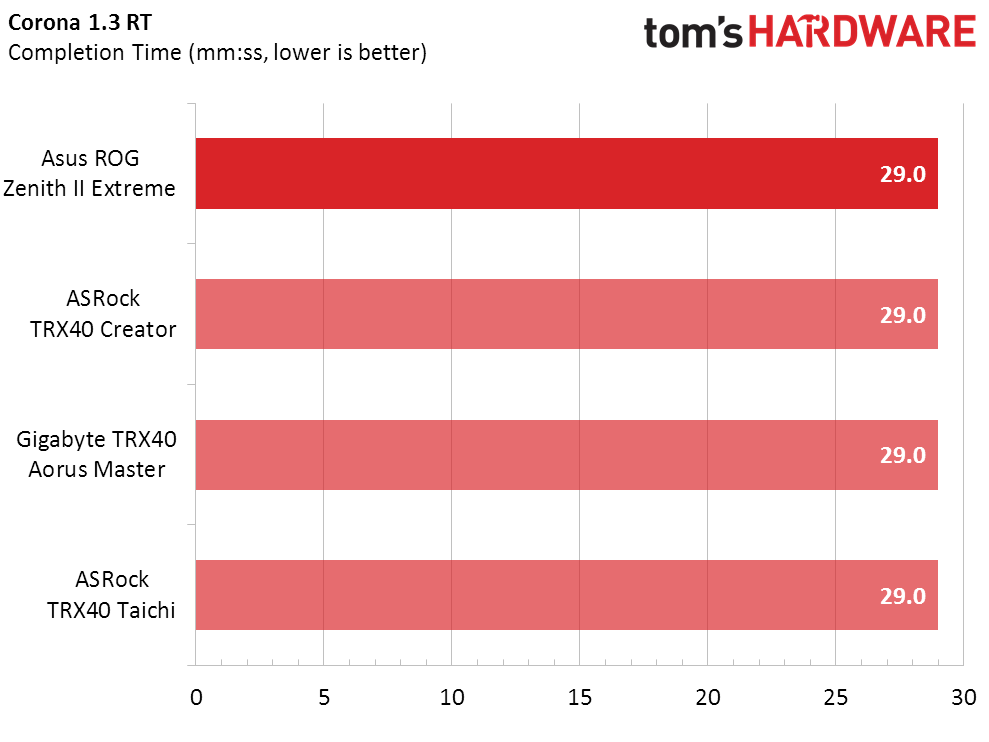
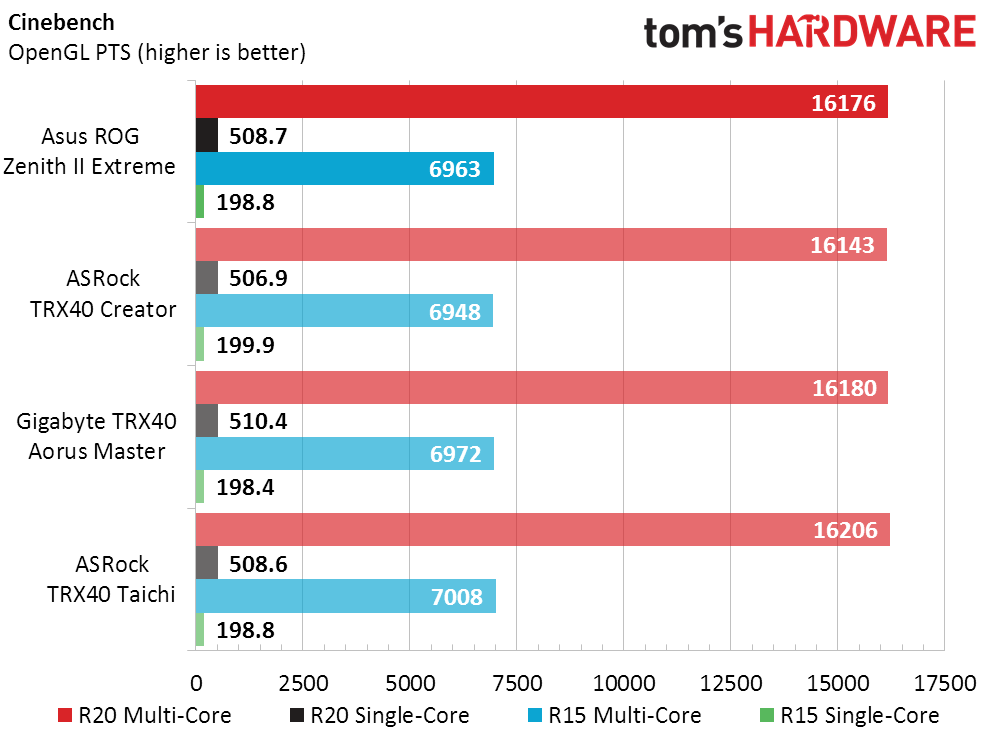
The ROG Zenith II Extreme finished our timed workloads slightly behind the other boards, winning only the H.265 bench while trailing in H.264 and LAME encoding.
Power, Heat and Efficiency
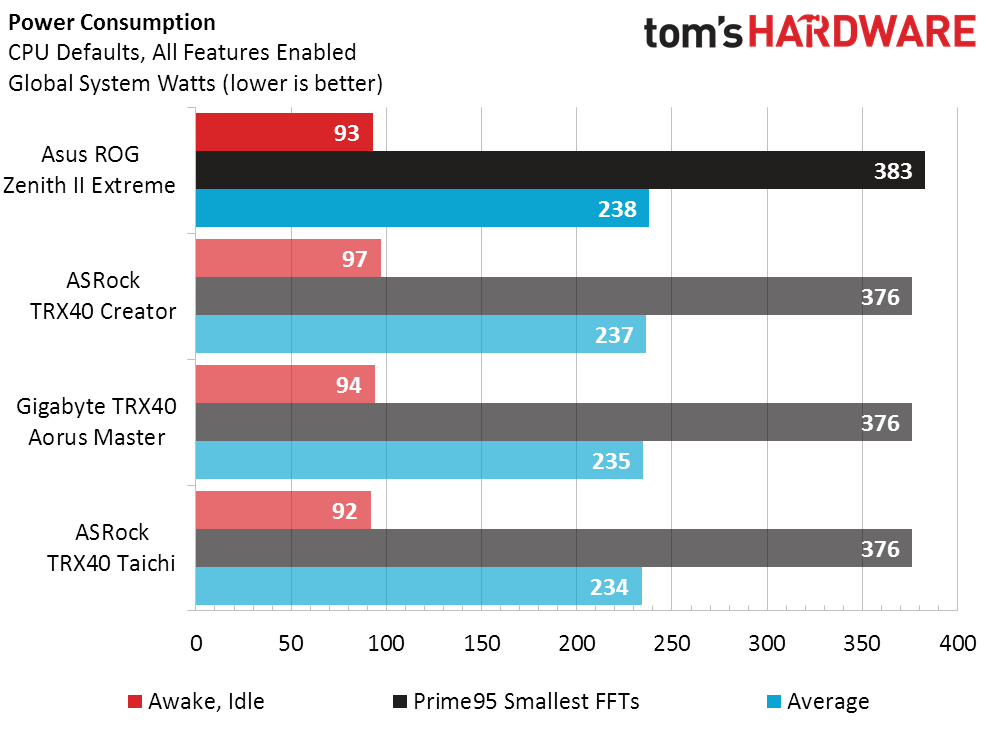
The ROG Zenith II Extreme consumed the most power of all four boards, but was only 4W worse in the average of idle and full-load testing than the most miserly board.
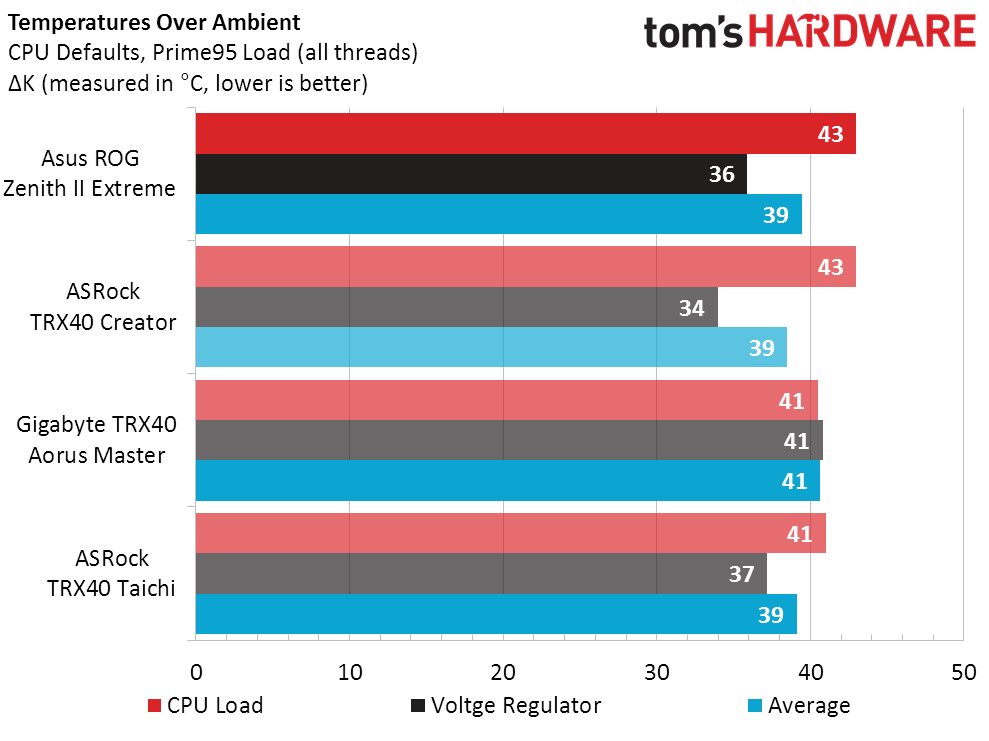
Thermal results show nothing major, though we would like to point out that the ROG Zenith II Extreme never got warm enough to turn on its twin 30mm voltage regulator fans.
Get Tom's Hardware's best news and in-depth reviews, straight to your inbox.
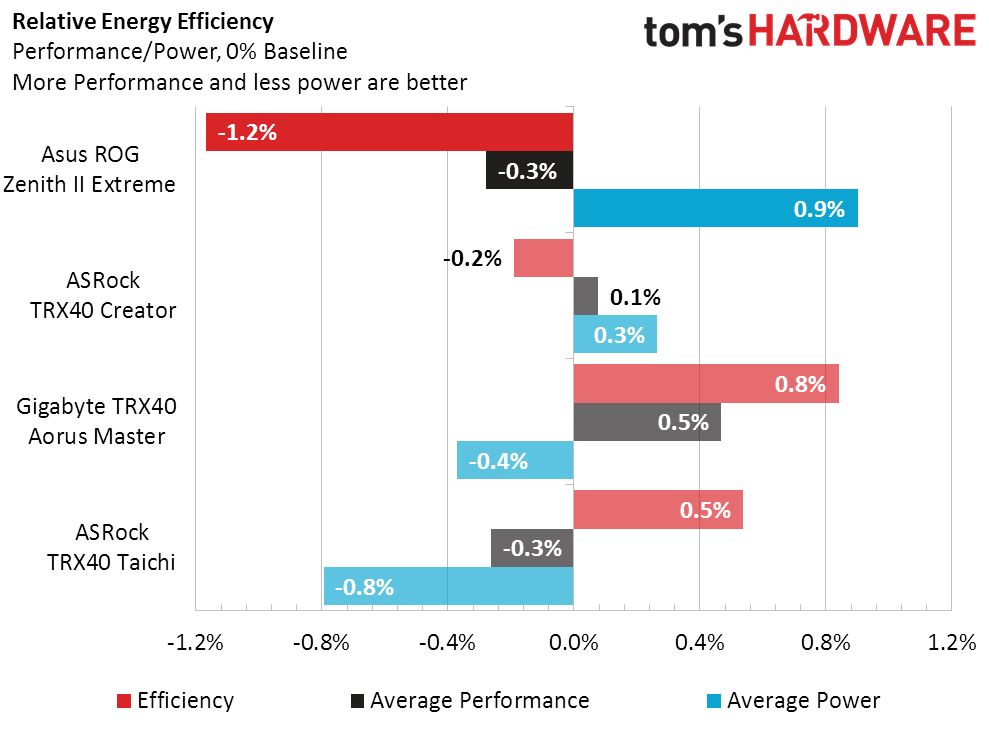
With so little differentiation in overall performance, a scant few extra watts of power consumption put the ROG Zenith II Extreme an equally unremarkable 1.2% behind the average of all four boards in efficiency.
Final Thoughts
If you're looking for a TRX40 motherboard, you can definitely find one that's less expensive than the Asus ROG Zenith II Extreme as most of its competitors cost $500, a full $350 below the Zenith's price. You'll get much of what you paid for since Asus's board has the best combination of features.
Of its competitors, the TRX40 Creator is the only model to include 10GbE, and the TRX40 Taichi is the only board to include an M.2 riser card for additional drives, both features that come on the Zenith II Extreme. ASRock's Taichi has only three PCIe slots though, and using its PCIe to M.2 adapter will at least wreck the board’s ability to support two graphics cards that have triple-slot coolers. The Zenith II Extreme also has a shorter (40mm vs 55mm) voltage regulator cooler than the Taichi, which means that it provides more clearance for a top-panel radiator.
The Zenith II's proprietary design offers a more easily-used row of voltage detection points than the only competitor to have one, the TRX40 Aorus Master. Add the ROG Zenith II Extreme’s fan extension card, a verbose OLED system status display in an easily-viewed location, the extra controllers required to connect its extra USB ports, and suddenly you’re looking at a board worth quite a bit more than its competitors.
Do all of these added features make the Asus ROG Zenith II Extreme worth its high price? The answer really depends on your individual needs and budget, but if you can afford it and make use of things like 10GbE Ethernet and added PCIe connectivity, the Zenith II Extreme could be worth your money.
MORE: Best Motherboards
MORE: How To Choose A Motherboard
MORE: All Motherboard Content
Current page: Benchmark Results and Final Thoughts
Prev Page Software, Firmware and Overclocking